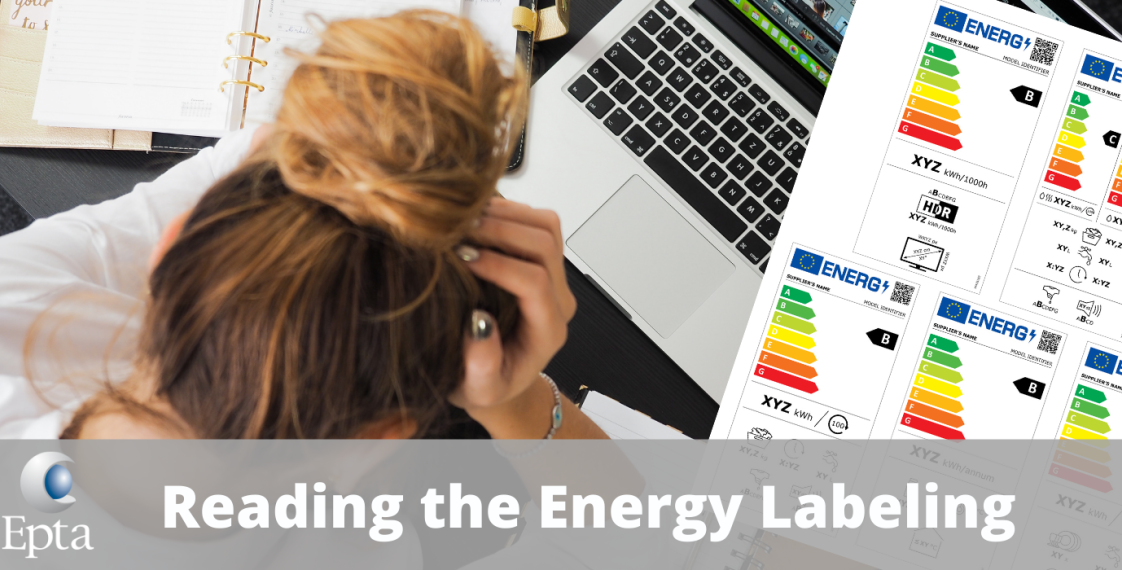Reading the energy label

The Energy label rates products from A (the most efficient) to G (the least efficient) and is required by European law to be clearly displayed at the point of sale on the following products:
- Air conditioners
- Cooking appliances (domestic)
- Dishwashers (household)
- Heaters (space and water heaters)
- Lamps
- Local space heaters
- Refrigerating appliances (household)
- Refrigeration (professional)
- Solid fuel boilers
- Televisions
- Tumble dryers
- Tyres
- Vacuum cleaners
- Ventilation units (residential)
- Washing machines (household
If you are a manufacturer, an authorized representative or an importer in the EU you need to make sure the energy label is shipped with the product and that the energy efficiency rating appears on all promotional materials, online sale platforms, commercial offers and any other marketing document.
The label indicates that the product has been assessed by the manufacturer or by the seller, who is required to certify products based on EU criteria set for each product type, and found to meet the minimum energy efficiency requirements and environmental criteria stated in the Ecodesign Regulation, putting it among the class of products that can circulate in the European market.
Energy labels enable customers to choose products that consume less energy and thereby save money. Labels can also encourage companies to develop and invest in energy-efficient product design.
The label rates products from dark green (most efficient) to red (least efficient).
The displayed energy consumption tells you how much electricity the product uses in kilowatt hours per year (kWh/annum) and allows you to compare different models. The lower the figure the less energy it will use, hence saving money on your energy bills. Actual savings will, of course, depend on how you use the product and how much you pay for your electricity.
The icons on the bottom of the EU energy label are different depending on the product type and give additional information about the product (water consumption, noise levels, screen size for televisions, etc.).
The new Energy Labeling Regulation (2019/2018) for Refrigerating appliances with a direct sales function states that, if a product complies with the Ecodesign requirements, as of March, 1st, 2021 it must be supplied in the European Union with the new Energy Label, similarly to all other product categories mentioned before.
Let’s have a closer look at the energy labels foreseen for commercial display cabinets (Lot 12, Main function Sales & Display), first products to adopt the new European Energy Labelling format in use as of 2021.
The energy labelling system is expected to both drive the market towards the best in class products with better and clearer visual information, and to push manufacturers to supply more efficient models to the market.
In the initial scenario it is therefore expected that the first two energy classes – A and B – are initially empty, due to the very high efficiency limits intentionally set by the European Commission and required by these two classes. Over time, they will be occupied with new better products. Alike other product categories where the energy labelling scheme is in place since years, those who will buy a commercial display cabinet ‘class C’ in 2021 should be aware that they are buying the best in its in class. In future innovation will introduce new A and B products available for purchase, thus pulling the market up.
It is key to explain very well this concept, in order to transmit to our Clients the real value of the products that they will purchase.